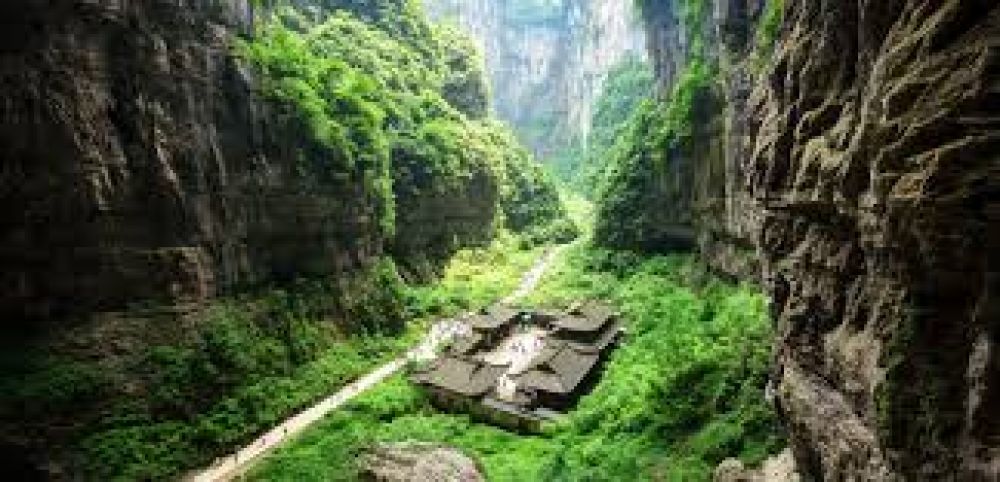

Nestled within the breathtaking landscapes of Chongqing, China, the Wulong Karst National Geology Park is a testament to the timeless beauty and power of nature. Known for its extraordinary karst formations, this UNESCO World Heritage site has attracted nature enthusiasts, geologists, and tourists from all corners of the globe.
Though the natural formations of Wulong have existed for millions of years, it was not until relatively recently that the Wulong Karst National Geology Park was recognized as a major tourist destination. In its earliest phase, access to the park was limited, and only the most passionate adventurers made the arduous journey to view its stunning landscapes. However, as word of mouth spread and the area's scientific significance became known, more and more visitors began to arrive.
The real turning point for tourism in Wulong Karst came with its inclusion on the UNESCO World Heritage list in 2007, as part of the South China Karst. This acknowledgment heralded a new era for the park, placing it firmly on the travel map and prompting significant enhancements in infrastructure and services to accommodate an influx of domestic and international visitors.
Following UNESCO recognition, the Chinese government and private investors saw the potential of the site and began investing in the region. Improved roads, signage, and visitor facilities sprung up, with the goal of ensuring that Wulong Karst Geology Park kept its natural wonder while becoming more accessible and educational for guests.
The park's success as a tourist attraction also received an unexpected boost from the cinematic world. The breathtaking scenery of Wulong Karst played a dramatic backdrop in blockbuster movies such as "Transformers: Age of Extinction," which showcased its incredible natural features to audiences worldwide, triggering a surge in so-called film-induced tourism.
In recent years, tourism trends in Wulong Karst National Geology Park have continued to evolve. With the rising interest in sustainable and eco-friendly travel, the park has taken measures to protect its environment while educating visitors on the importance of conservation. Green transportation options and guided eco-tours have become increasingly popular, reflecting a global shift towards more responsible tourism practices.
Additionally, the area has seen a rise in popularity among adventure seekers. Activities such as hiking, spelunking, and zip-lining attract those looking for an adrenaline rush amidst the park's natural splendor. Meanwhile, photography tours cater to the creative crowd eager to capture the park’s ethereal beauty.
Through its combination of natural wonder, scientific importance, and cultural significance, Wulong Karst National Geology Park continues to stand as a shining example of China's commitment to showcasing its natural heritage while paving the path for the future of tourism.
Today, guests to the Wulong Karst National Geology Park can enjoy a myriad of experiences, from walking along established trails to viewing the iconic Three Natural Bridges—a trio of magnificent limestone spans that tower over the landscape. With the local infrastructure catering to international tourists, including multilingual guides and informational resources, a trip to Wulong is both enjoyable and enlightening. Whether one is drawn by the pursuit of adventure, the love of nature, or the lure of geology, Wulong Karst offers a unique and unforgettable journey through the annals of our planet's history.